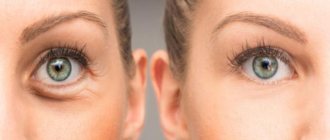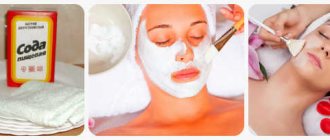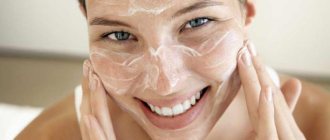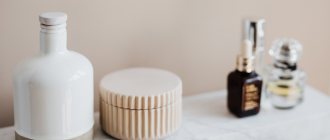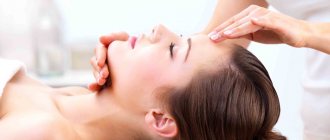Flaky epidermis on the lower extremities is a problem faced not only by women, but also by men. Dry skin leads to the fact that it first begins to become rough, then peels and cracks, which, of course, brings discomfort to everyday life, and sometimes even causes discomfort. If such a problem occurs in the summer, then putting on nice open shoes becomes problematic, and deep cracks in the feet cause discomfort and pain. To overcome this skin ailment without visiting a doctor, you can use many home recipes that will relieve you of dry feet in the shortest possible time. But before moving on to recipes, you need to understand what may be causing this problem.
Causes
In total, doctors identify 5 groups of reasons why such changes occur:
- influence of external factors;
- age-related changes in the body;
- progression of chronic diseases;
- infectious lesion;
- poor nutrition.
Let's look at each point in more detail.
It’s worth saying right away that most of the factors that lead to peeling of the skin on the legs below the knees can be eliminated without much effort and specific treatment. Many people who have a fairly sensitive epidermis have peeling feet when exposed to aggressive wind, sun, cold, water and air. People with dry skin type suffer the most under such conditions.
The solution to the problem may be to use a rich cream when you go outside in frosty weather, but if it’s summer outside, then cosmetics with increased ultraviolet protection will come in handy (men should also not neglect these recommendations). If the air in the room is dry, then you need to install a humidifier or several containers of water. To humidify the air, you can wash the floors more often without wiping them dry.
If a person uses a foot cream that is not suitable for their skin type, peeling may also occur. Therefore, before buying any cosmetics, it is better to carefully read the recommendations and instructions of the manufacturer. When girls often exfoliate their legs, the function of their sebaceous glands is inhibited, so such products should be used only when absolutely necessary.
Peeling of the legs below the knees can be a symptom of the body's reaction to a food irritant. Simply put, a person has an allergy. In this case, peeling is accompanied by itching. Provocateurs can be artificial and natural materials from which clothes and shoes are made, as well as dust, animal hair, household chemicals and much more. To solve the problem, you need to limit contact with the irritant, or completely eliminate it, and also consult with your doctor about which antihistamines are best to take.
The cause of peeling legs may be insufficient fluid intake, that is, dehydration. To prevent this, you need to drink at least one and a half liters of clean water per day. If you do not heed this recommendation, gradually, starting from the shin area, the peeling will reach the thigh, and even then the process will become irreversible, and it will be impossible to cope with it.
In addition to a small amount of fluid, legs in this condition can be due to the abuse of anti-cellulite products, violation of the rules of visiting the sauna, etc.
External reasons
Your feet, or rather the skin, will not start to become dry and flaky just like that. There are many external factors that provoke the development of this condition, but their complex impact is considered the most dangerous.
Reasons of this type include:
- Excessively dry air in the living room during the heating season.
- Incorrect wearing of underwear for weight loss, stockings and socks made of synthetic materials, and especially if they still have a tightening effect, which contributes to squeezing blood vessels, poor circulation and improper nutrition of cells.
- Aggressive exposure to ultraviolet radiation, including regular visits to the solarium.
- Swimming in water with a high chlorine content (swimming pools).
- Lack of water purification filters at home.
In most cases, eliminating external negative factors is not difficult.
Age
Unfortunately, no person can influence the natural processes of the body and stop aging. After 50 years, and for some people even earlier, changes in the structure of the skin begin to occur: they become thinner, lose moisture, which leads to peeling of the legs and other areas. This condition is caused by changes in collagen fibers, which are the main building element of the epidermis.
To solve the problem, it is recommended to eat more foods that contain collagen, and also not to neglect drinking clean water, which will help normalize lipid and fat metabolism in tissues.
Infections
Peeling of the skin of the legs can occur due to the penetration of pathogenic infections and microorganisms into the epidermis. One of the most common causes is a fungal infection, which can be “caught” in any public place through contact with a carrier of the infection. In addition to dryness and flaking, the feet are very itchy, especially between the toes, involving the foot and lower leg.
For such a disease, therapy is prescribed only by a doctor, but the patient is first advised to undergo an examination with tests that will help determine the type of fungal infection.
In addition to fungus, dryness and flaking of the lower extremities can be a symptom of eczema, dermatitis, psoriasis or Kawasaki disease. Therapy should also be prescribed by a qualified dermatologist and after laboratory diagnosis.
In addition to skin diseases, itching, dryness, redness and peeling of the legs occur in the presence of concomitant pathologies, including:
Speaking about medications, it is worth noting that if a person takes a lot of hormonal drugs, then the legs can also peel very much below the knees. Similar conditions are observed with short-term or long-term use of ointments with hormones, which lead to dysfunction of the stratum corneum of the epidermis.
A wonderful healer - castor oil
Not only essential oils, but also vegetable oils, such as castor or coconut, will help the skin of your feet.
Castor oil contains large amounts of fatty acids, which are beneficial for dry skin. It perfectly replenishes the lack of nutrients, so it is indispensable when treating feet. In addition, it has a wound-healing effect, which is important for cracked heels. Regular use of castor oil will help strengthen your toenails and prevent the occurrence of fungal diseases. Before use, the heels must be cleaned of dead skin using pumice.
The method of application is very simple. You need to lubricate your heels with castor oil at night, wrap them in plastic and wrap them up, you can put on warm socks. If it is uncomfortable to sleep with your legs wrapped up at night, then wrapping can be done shortly before bedtime. You need to keep the castor mask for at least 2-3 hours. Repeat the procedure every other day for 2 weeks. Castor oil will have a miraculous effect. After 2 months you can repeat the course.
You can simply apply a cotton wool soaked in castor oil to your heels at night. Polyethylene bags are used for fixation.
Another way to use it is to warm up the castor oil a little in a water bath (if you have a microwave at home, you can use it) and massage your feet.
Prevention
If you don’t want your feet to start cracking, peeling, or itching, then it is recommended to follow standard prevention rules. If a person visits a swimming pool, sauna, wears someone else’s slippers, or buys shoes to try on in a store, then it is recommended that he always put on disposable socks first. This way you can avoid direct contact with pathogenic bacteria, because your foot will be protected. You still can’t use the same personal hygiene items, as the fungus is transmitted very quickly.
As for the condition of the body, first of all it is necessary to promptly treat all skin diseases. You definitely need to fill your diet with healthy foods and give up fast food.
If a person is allergic, then he should take care to reduce contact with the irritant. During autumn, winter and spring, when there is a serious lack of nutrients, you need to take vitamin complexes. And always remember that low fluid intake will lead to dehydration, which in turn causes dry and flaky skin on your feet.
Girls should carefully approach the choice of cosmetics; do not neglect the suitability of skin type and recommendations for creams. If possible, it is necessary to find a replacement for peeling if peeling of the skin of the legs below the knees is observed after it.
If the skin on your ankles is peeling, this is not only an aesthetic problem. Peeling is usually accompanied by dryness, irritation of the skin, and unpleasant sensations from any mechanical impact. The cause of this condition may be pathological changes in the body that affect skin regeneration and blood supply, or external influences.
What to do in such a situation
Initially, you should check whether you have any concomitant symptoms of diseases of other organs, because it may only be the first manifestation of a serious illness. In such a situation, the best solution would be to consult a doctor. If dry skin is accompanied by a rash, excessive formation of scales, severe itching, and redness, then you should immediately go to a dermatologist. If you do not have such symptoms, then you can solve the problem of dry skin yourself.
First, let’s answer the question: “dry skin on hands, what to do?” what tips can be used when you have dry skin on your elbows.
It is worth remembering that if you have dry hand skin, the treatment will be complex and includes not only the use of cream. An approach to solving this problem should include: normalizing nutrition, changing lifestyle, using baths, therapeutic massage and many other procedures.
General recommendations include:
- washing hands only with moisturizing soap;
- wash dishes, do laundry and clean up only with gloves;
- use cream after each hand washing;
- use a wide variety of masks that you can prepare at home;
- make paraffin baths.
Fungus as a cause of irritation and dryness
One of the most common causes of dry skin on the ankles is a fungus. Its development is provoked by excessive sweating, small wounds, and neglect of hygiene standards. In this case, the fungal pathogen penetrates the deep layers of the epidermis and infects the cells.
Signs of foot fungus:
- redness;
- change in integrity (skin surface bursts and cracks);
- peeling and drying;
- itching;
- rashes.
Where can you get infected with fungus:
- Bath or sauna.
- Swimming pool, public shower.
- When using someone else's shoes.
- When wearing someone else's underwear.
Ways to treat foot fungus:
- Use of local antifungal agents (Clotrimazole, Candide, Miconazole).
- If the skin cracks during treatment, dry skin should be cleaned off as much as possible.
- Use deodorants to avoid excessive sweating of the feet. Humidity encourages fungal growth.
Treatment of fungus requires an integrated approach and patience. You will have to use these methods for at least 3 weeks.
Clay mask
This mask promotes the healing of small cracks, fights corns and tones the skin. To prepare a cosmetic product you will need 0.5 tbsp. blue clay, a little warm water and 10 drops of lavender oil.
Oil is added to water, this liquid is gradually introduced into the clay to obtain the consistency of liquid sour cream.
The mask is applied to clean, dry skin of the feet and covered with a film on top. You need to wash it off after 30 minutes. To consolidate the effect, you should use a nourishing cream.
Metabolic disease
Sometimes the skin on the ankles cracks due to metabolic disorders. The main cause of the pathology is a violation of carbohydrate and protein metabolism.
To confirm this diagnosis, it is necessary to carry out a differential diagnosis with fungal infection and an allergic reaction.
The most dangerous metabolic disorder is type 1 or type 2 diabetes. It provokes a change in the exchange of nutrients between the cell and the intercellular space. Nerve endings do not perform their function, as a result the skin cannot adequately respond to changes in body temperature and environmental humidity.
This leads to excessive dryness of the epidermis. In the future, it cannot create the necessary protection from the harmful properties of the environment, which aggravates the problem.
The skin begins to itch terribly, peel and crack.
In a huge number of cases, diabetes is not diagnosed or detected untimely. Therefore, if you notice changes in the structure of the skin anywhere in the body, you need to donate blood for the presence of glucose on an empty stomach and do a glucose tolerance test.
Disorders of protein metabolism most often lead to the accumulation of oxidation products in the body. They cause damage to the cell wall, making it fragile and brittle. In addition, protein deficiency in the body slows down the construction of new cells, this affects the functioning of all body systems, and therefore well-being, productivity, and appearance.
What else can you apply for dry feet: rating of the best creams
Xerial 50 Extreme Crème Pieds by SVR
An effective high-quality cream to combat cracked feet.
The product has also proven itself in the treatment of calluses, corns and even chronic hyperkeratosis. Compound :
- natural urea – moisturizing, removing dead skin layers;
- shea butter – regeneration, moisturizing, nutrition;
- salicylic acid – exfoliation;
- protease complex – restoration of active processes at the cellular level;
- glycerol, serine, allantoin, histidine – softening, moisturizing.
The cream has a light texture, is quickly absorbed , does not leave a sticky or greasy film on the skin and belongs to the pharmacy hypoallergenic line of cosmetics. The cream can be used not only on the feet, but also on the skin of the elbows, legs, and arms. The procedures must be carried out until the cracks and roughness disappear completely.
Natural composition, absence of fragrances and parabens are additional advantages of the cream. The result will be noticeable 1-2 weeks after the start of use.
Important! The disadvantages of a universal product include high cost and tingling of the skin after application.
Scyoll active repair K+
Among all the representatives of the rating of the best creams for the treatment of cracked heels, this contender wins in terms of the speed of achieving the effect, but loses in the price, which is greatly inflated.
According to user reviews, a visible effect is observed within a week after regular use of the product. After one use, the skin of the feet becomes noticeably softer, itching, peeling and redness disappear.
An additional advantage of the foot cream is its regenerating effect, thanks to which a quick healing result is achieved. The product is sold in convenient, economical packaging, which is enough for long-term use.
It is recommended to apply the product twice a day. At night, the cream is applied in a thin layer to the feet and wrapped in cling film . Reference. During the existence of the brand, the manufacturer has managed to establish itself well, thanks to which the products are in high demand among consumers.
“Heels are fine” from Nature med
One of the most effective creams for eliminating cracked and rough areas on the heels.
A distinctive feature of all products from this manufacturer is their natural composition and hypoallergenicity, due to which many consumers prefer this particular product. Regular use of the cream will quickly make rough, cracked skin soft and moisturized.
One of the main properties of the product is the active regeneration of damaged areas of the skin. The cream has an affordable price and, moreover, good quality. The product can be used by both adults and adolescents. Use by small children is not recommended by the manufacturer. The instructions clearly state the age limit to 18 years.
Reference . The product has a long-lasting effect, is quickly absorbed, and does not leave a greasy film or a feeling of tightness on the skin. There are 2 types of tubes for the consumer to choose from; for testing, you can take a smaller one, with a volume of 75 ml.
“Losterin” from Bestwood Pharma
Another budget option for eliminating the most common foot problems (cracks, calluses, corns).
The cream has an anti-inflammatory, antifungal, and regenerating effect. It is also recommended for the healing of chronic dermatoses and hyperkeratosis. Composition of the drug :
- deresined naphthalan (improves microcirculation, relieves itching and inflammation, heals damaged skin);
- D-panthenol (skin regeneration);
- vitamins E and A, almond oil (nutrition, moisturizing, softening);
- natural urea (moisturizes, softens);
- triclosan (has an antibacterial effect).
Important point : despite the effectiveness of the drug and the active ingredients, it is not hormonal and allergenic, which allows it to be used not only by adults, but also by children. In addition, the composition is free of fragrances, fragrances and parabens. The product will help heal cracks, eliminate itching of the feet and the area between the toes, and reduce sweating.
The main active ingredient in the composition is naftalan, a petroleum product that is widely used in pharmaceuticals and medicine. Products made from it are used to treat diseases such as psoriasis, eczema, dermatoses and mycosis of the feet. The cream is used daily after preliminary steaming of the feet and treatment with pumice.
Now you can choose the best cracked heel healer based on suitable features and price range.
Allergic reactions
Allergic reactions can be triggered by many factors:
- synthetic underwear;
- washing powder or fabric softener;
- material of shoes or fasteners;
- eating foods that cause allergies (citrus fruits, spices, etc.).
Symptoms of allergic drying of the skin on the ankle bones:
- irritation and peeling after contact of the irritant with the bare surface of the body;
- itching;
- small rashes;
- edema and swelling;
- pain or discomfort.
Treatment of allergic skin reactions:
- local antihistamines (Allergodil, Avamis, etc.);
- traditional medicine methods;
- limiting contact with the allergen;
- taking antihistamines orally (Diazolin, Suprastin, etc.).
Preventive actions
Similar problems can affect anyone. But this is especially true for women, and the older she gets, the more problems arise with her skin. To avoid problems with peeling feet, you need to follow a few simple rules:
- Take care of the skin of your feet. Moisturize and nourish it daily using special products.
- When choosing detergents, give preference to nourishing and moisturizing gels.
- Clothing should be made of breathable fabric; good material maintains moisture balance.
It is necessary to lead an active lifestyle, spend more time in the fresh air, training the leg muscles helps to quickly cope with subcutaneous processes.
Article rating:
Loading...
Peeling skin during pregnancy
If the skin on the ankles peels during pregnancy, this is the first sign of vitamin deficiency in a woman’s body.
As you know, a child takes everything necessary for its development from the mother’s body. These are calcium, protein, polyunsaturated fatty acids and similar microelements and substances.
First of all, when there is a lack of vitamins and other necessary complexes in the body, women’s hair begins to dry out and nails become brittle.
At this time, the consistency of the skin of the lower and upper extremities may also change. The skin on the ankles and arms begins to dry, peel and itch.
To correct the situation, it is necessary to urgently use replacement therapy, otherwise teeth may deteriorate, vision may be impaired, and even diseases of the nervous system may develop.
Causes of dry skin on the ankle bone during pregnancy:
- Deficiency of vitamins A, E, D.
- Lack of protein in the diet.
- Excess simple carbohydrates.
- Exacerbation of diseases of the gastrointestinal tract.
- Contamination of the body with oxidation products.
- Consuming a large amount of fiber, which can remove all the toxins that poison the body.
- Taking a double dose of vitamin C and E as antioxidants.
- B vitamins to improve the functioning of nerve cells.
- Long-term use of prenatal vitamins before, during and after pregnancy.
- Use of local moisturizing preparations based on animal or vegetable fat. Olive oil is best.
- Timely cleansing of the skin from dead cells using a scrub.
Stages of skin and nail care
Skin of feet
Before using foot care products you must:
- apply foot relaxation solutions prepared based on oils and other components;
- cleansing the skin of the feet - foams and gels can be used for this;
- scrubbing dead epidermis - scrubs and peelings are used, the frequency of their use is individual;
- applying masks - these products can be prepared independently or purchased ready-made;
- use of creams for daily care - such products are used daily or as needed.
Nails
For nail care you can use:
- peelings and scrubs – used to remove cuticles and polish the surface of the nail plate;
- creams and balms - to nourish and moisturize the nail and surrounding skin;
- means to prevent suppuration and fungal infections - used when there are wounds and cuts on the skin near the nail or there is a risk of infection of the epidermis with these microorganisms.
For this, the same products can be used as for caring for the nail plates on the hands.
Neurology as a cause of dry skin on ankles
Sometimes, due to leg injuries, the integrity of the nerve fibers is disrupted, which leads to changes in the trophism of all soft tissues of the limb.
The disease begins with dry skin and can result in drying out of the limb.
To avoid such complications, after a leg injury, you need to follow all the doctor’s recommendations during rehabilitation and take prescribed medications to restore damaged tissues (glycosaminoglycans, chondroprotectors, B vitamins).
Foot massage has a good therapeutic effect; it increases blood circulation and improves trophism of all ankle cells.
Effect of essential oils
Aromatherapy helps relieve fatigue and also relieves pain. Many essential oils have antimicrobial and soothing effects, which is so important when cracked heels appear. If fungus appears on your feet, you can use essential oils. To use them correctly, you need to know what effect a particular substance has.
- Lemon stimulates blood circulation; if you add it to baths, the nutrition of your feet will improve. The extract also promotes faster skin renewal. Refreshes well and removes unpleasant odors.
- Tea tree oil is a good disinfectant. It can be used to treat wounds and cracks, and to treat fungus. It will soothe the skin after insect bites and remove blisters. Well softens rough skin on the heels.
- Mint relieves inflammation and swelling. It also has a decongestant and calming effect. It's good to soak your feet in a mint-scented bath after a long day on your feet.
- Eucalyptus is another disinfectant. It destroys various bacteria and viruses, prevents the appearance of fungus.
- Lavender soothes and relaxes tired feet.
- Rosemary relieves pain.
Traditional methods for treating dry skin on ankles
Traditional medicine has a beneficial effect on the condition of the skin, increases its elasticity, softens and promotes healing. However, traditional recipes should be used only after consultation with a doctor. For neurological diseases, diabetes and other systemic disorders, such therapy will not help; the root cause must be treated.
For rashes and skin inflammation, you can take warm baths with decoctions of sage, chamomile or oak herbs.
For excessive dryness, vegetable oils have a good effect. Corn, olive or flax oil is best.
Important! You should not apply vegetable oils to superficial damage and deep wounds, this can only aggravate the condition of an allergic reaction.
So, the causes of dry skin on the feet are often complex. To eliminate them, it is first necessary to exclude systemic diseases (diabetes mellitus, thyroid pathology) and only then apply local treatment.
No cream helps. I tried everything: baby cream, olive oil, even Rescue balm! The result is zero. In fact, I've had this thing for a long time. It looks like this: in the ankle area there is a FLAT LINE, underneath there is normal soft skin and on top about five centimeters the skin is red, dry and flaky!! Feels like sandpaper. It's like a shoe print! I wear wool tights and jeans all winter. What is this *** and can it be removed at all? In the summer it more or less goes away, but the line is still visible.. Please advise how to deal with this. Who had the same problem? Thank you in advance
Woman.ru experts
Find out the opinion of an expert on your topic
Aleynikova Natalya Valerievna
Psychologist. Specialist from the site b17.ru
Zubkova Anna Andreevna
Psychologist, Gestalt therapist. Specialist from the site b17.ru
Khairullina Rosa Rinatovna
Psychologist. Specialist from the site b17.ru
Korotina Svetlana Yurievna
Psychotherapist. Specialist from the site b17.ru
Ekaterina Alekseevna Vasyukhina
Psychologist, Crisis counseling. Specialist from the site b17.ru
Vera Vladimirovna Zolotykh
Psychologist. Specialist from the site b17.ru
Elena Basanova
Psychologist, Family psychologist Skype. Specialist from the site b17.ru
Boyko Inessa Borisovna
Psychologist, Online consultant. Specialist from the site b17.ru
Nevzorova Sofya Igorevna
Psychologist. Specialist from the site b17.ru
Against fatigue and swelling in the calves
After long walks or at the end of the working day, your legs feel heavy and swelling appears in the calf area. Oils suitable for the skin of your feet will help you cope with it. With their help, you can enrich store-bought cosmetic products.
Add 2 drops of geranium and eucalyptus oils to a small amount of body milk (you can use base oil instead). A mixture of the following oils gives a good effect: cypress, grapefruit, juniper, lemon.



